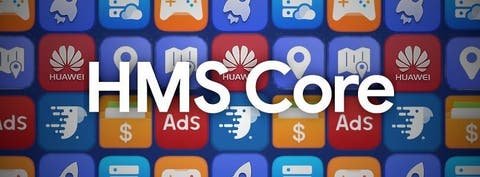We know Google no longer provides GMS (Google Mobile Services) to Huawei, trying to ‘brick’ Huawei’s smartphones sold overseas. But this strategy of the US did not work. In the face of adversity, Huawei smartphones not only maintained rapid development but also found an alternative to Google. On December 24, Charles Peng, head of Huawei’s Indian consumer business, revealed to the Indian Economic Times that Huawei has established HMS (Huawei Mobile Services). Moreover, its key functions such as navigation and payment will be available immediately. Forbes thinks that ‘Huawei warns Google: we are almost ready to replace you’.
At the same time, Observer Network noted that Huawei HMS, which includes mail services, has opened a beta test in China on December 23.
In May this year, Google responded to the US government’s ‘Entity List’. Smartphones sold by Huawei in overseas markets cannot use Google Mail, Youtube, Google Pay, Google Cloud, and Google Navigation Services under the original factory settings. In this regard, Citibank believes that Huawei’s smartphone is equivalent to being ‘paralyzed’, and its overseas market share will be reduced.
HMS Coming Soon … But When?
But Charles Peng revealed yesterday, ‘We have our own HMS and are trying to build a mobile ecosystem. Most of the key applications of HMS, such as navigation, payment, games and messaging, will soon be online … You will see the difference between HMS and GMS, and we are focusing on how to work with developers to provide a good customer experience. We are working to resolve this issue.’
The Economic Times originally reported that Huawei’s HMS will be launched as soon as the end of December this year. On the day before Huawei’s interview with Indian media, that is, December 23, Huawei’s HMS has launched a public beta in China.
This public test released two application tests – one is Huawei Mobile Services and the other is HMS Core Test. This version of HMS has fixed some known issues and improved some performance experiences; Huawei account, in-app payment, Some functions such as message notification and wallet come to provide more stable and high-quality services. As for HMS Core Test, it is a small app market model that integrates 6 HMS basic services.
Will HMS Have Its App Market?
Previously, because of Google’s GMS service block, Huawei launched its own ecological service. According to data released by Huawei, as of August 2019, the HMS ecosystem has grown rapidly. Moreover, the number of registered developers accessing this service worldwide has exceeded 1.01 million. There are more than 450,000 apps.
Yesterday, Huawei also introduced that it is negotiating with India’s top 150 app developers, inviting each other to settle in HMS, and providing subsidies of up to $17,000 per person.
Huawei’s ability to grow in adversity is obvious to all. The ‘entity list’ thrown out by Huawei in May by the US government is currently ineffective. Huawei founder and CEO, Ren Zhengfei pointed out that Huawei has not been harmed by the ‘entity list’.
What About Harmony OS?
Facing the ‘Google ban’, Ren Zhengfei also stated at the end of November that even if it is isolated from Google’s software and applications, Huawei can still become the world’s largest smartphone brand. The launch of this service will once again get rid of external constraints.
It is worth mentioning that the ecological resources accumulated by HMS will also nourish Huawei’s Harmony OS. This also means that if Huawei Mobile Service will become popular soon, it will accelerate the incubation of Harmony OS.
Follow Gizchina.com on Google News for news and updates in the technology sector.
